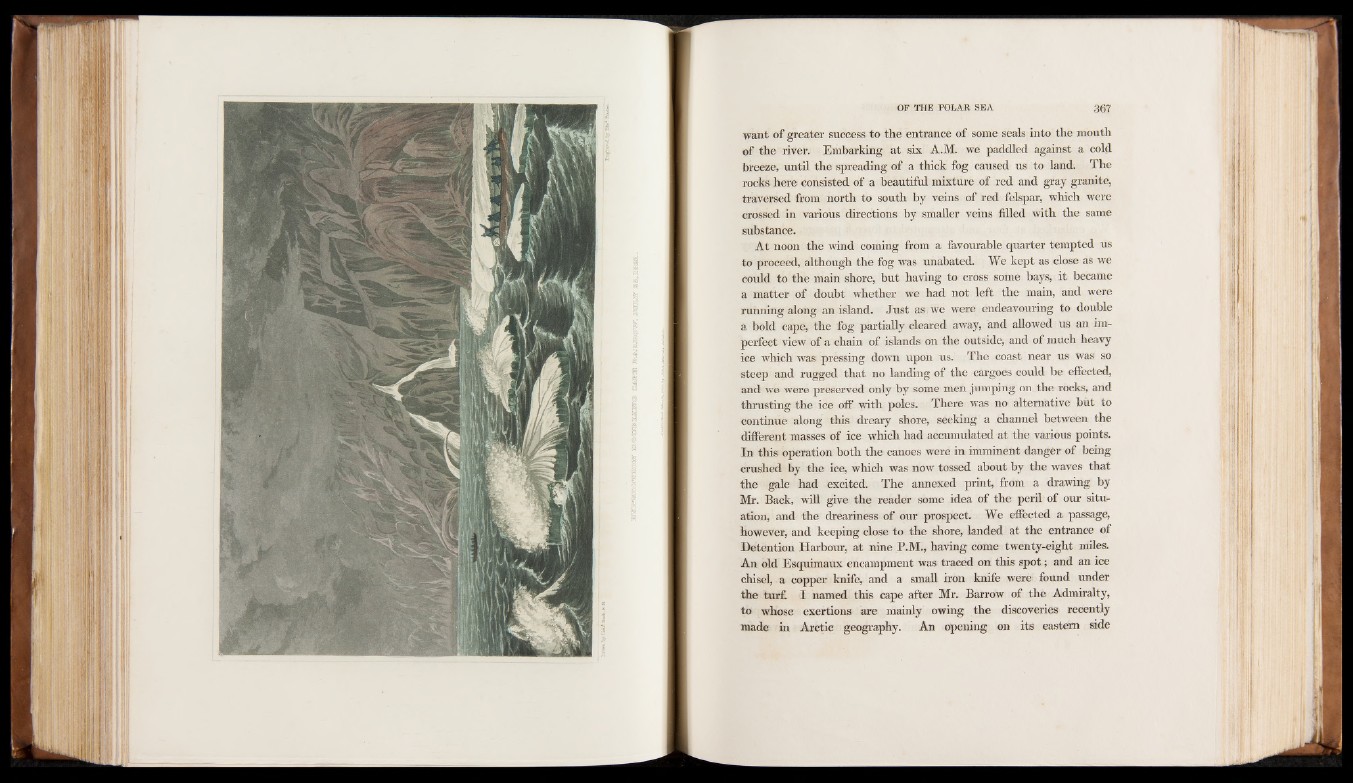
want of greater success to the entrance of some seals into the mouth
of the river. Embarking at six A.M. we paddled against a cold
breeze, until the spreading of a thick fog caused us to land. The
rocks here consisted of a beautiful mixture of red and gray granite,
traversed from north to south by veins of red felspar, which were
crossed in various directions by smaller veins filled with the same
substance.
At noon the wind coming from a favourable quarter tempted us
to proceed, although the fog was unabated. We kept as close as we
could to the main shore, but having to cross some bays, it became
a matter of doubt whether we had not left the main, and were
running along an island. Just as we were endeavouring to double
a bold cape, the fog partially cleared away, and allowed us an imperfect
view of a chain of islands on the outside, and of much heavy
ice which was pressing down upon us. The coast near us was so
steep and rugged that no landing of the cargoes could be effected,
mid we were preserved only by some men jumping on the rocks, and
thrusting the ice off with poles. There was no alternative but to
continue along this dreary shore, seeking a channel between the
different masses of ice which had accumulated at the various points.
In this operation both the canoes were in imminent danger of being
crushed by the ice, which was now tossed about by the waves that
the gale had excited. The annexed print, from a drawing by
Mr. Back, will give the reader some idea of the peril of our situation,
and the dreariness of our prospect. We effected a passage,
however, and keeping close to the shore, landed at the entrance of
Detention Harbour, at nine P.M., having come twenty-eight miles.
An old Esquimaux encampment was traced on this spot; and an ice
chisel, a copper knife, and a small iron knife were found under
the turf. I named this cape after Mr. Barrow of the Admiralty,
to whose exertions are mainly owing the discoveries recently
made in Arctic geography. An opening on its eastern side